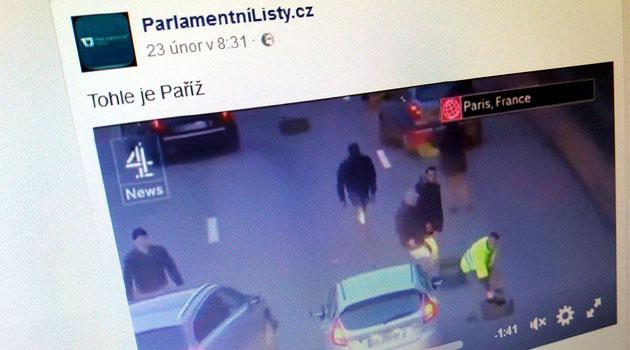Czech President alleges most immigrants are uneducated, but German statistics show otherwise

According to Czech President Miloš Zeman, most of the two million immigrants who have arrived in the European Union recently have not even completed a basic education. He belives that will significantly complicate their inclusion into society.
While on a visit to the Nutrend company in Olomouc, Zeman told the Czech News Agency that if the wave of emigration from Muslim countries cannot be halted, then the European Union will be forced to protect its external borders. The German Federal Office for Migration and Refugees (BAMF), however, has published other numbers based on a survey they did during 2015 of asylum-seekers’ education and qualifications.
Zeman: 35 % basic education, 65 % uneducated
“I have procured the information about the educational structure of those immigrants who have arrived in Europe so far, almost two million people. Most are in Germany. I have ascertained that 35 % of them have a basic education. When I read that, I said to myself, well, that’s not that bad, that’s a pretty high proportion. Upon further reading I discovered the rest have no education whatsoever,” the Czech President told the country’s biggest wire service.
According to Zeman, it will be a big problem to absorb these people into society. “As far as the immigrants from Muslim countries go, I have very serious doubts that they will manage to integrate and that they would even succeed in working here,” he opined, adding that there is roughly 10 % unemployment in the EU and people with such low educational attainment would not be able to apply themselves on the labor market.
Statistics from Germany: 18 % university, 52 % high school, 22 % basic education, 7 % uneducated
The BAMF published different numbers last year after collecting data during the course of 2015 – the year that the most immigrants arrived in Europe – about asylum-seekers’ education and qualifications. The assessment of that data demonstrates that overall, 18 % of asylum-seekers in Germany have already attended college, 20 % have attended an academic high school, 32 % have attended secondary school in general, 22 % have completed just basic education, and 7 % have no formal education.
The highest educational attainment is among refugees from the Middle East living in Germany. The positive examples are Iranians, 35 % of whom have college educations, and Syrians, 27 % of whom have attended university.
The least-educated asylum-seekers in Germany come from Afghtanistan, Eritrea, Macedonia and Serbia. According to the People in Need organization, however, asylum seekers from the countries of the former Yugoslavia have almost no chance of being awarded asylum in Germany.
Many Afghans and Pakistanis, according to People in Need, also are highly likely to face deportation from Germany. The Czech President believes that most immigrants will be dependent on social welfare in the years to come, which will significantly burden the budgets of their host countries.
Zeman warned that immigrants, who are frequently young men, also weaken their home countries when they leave them. “These are arguments against a certain type of migration, against Muslim migration,” the Czech President said.
According to data from the International Organization for Migration, of the one million refugees registered in 2015 throughout all of the EU, less than 40 % are minors of both sexes or women, while 60 % are men. Approximately one-fifth of the migrants are children and youth, and they frequently arrive in Europe without their parents.
As many as 90 % of the unaccompanied minors are boys. At the end of 2015 and the beginning of 2016, according to statistics, the proportion of adult male migrants began to fall and that of minors of both sexes and women to rise.
According to a June 2016 study by the German Institute for Research of the Labor Market and Professions (IAB), refugees have the biggest chance of applying themselves in the area of auxiliary and helping professions (e.g., in health care), where a great role is played by their ongoing acquisition and improvement of their qualifications during the performance of such professions. Many refugees who have attended academic high school or college in their home countries might continue to study at German universities.
Because 30 % of refugees are between the ages of 18 and 25, they have a big potential to apprentice or to acquire secondary vocational education. The condition is that they meet the terms of integration into the education system, primairly by learning German.
The German Interior Ministry says that in 2015, one million asylum-seekers registered in the country. Some refugees may have been registered twice.
